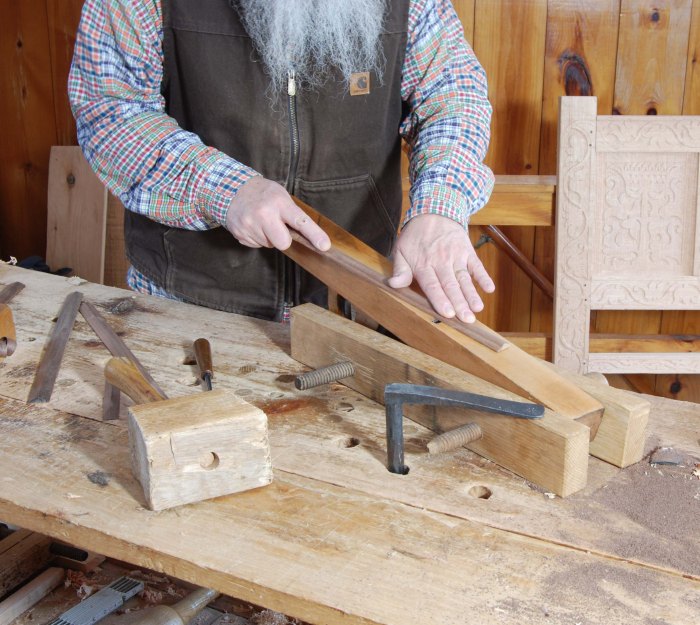When Chris Schwarz left his job some time ago, I remember him writing later that he never knew what day it was. That’s the boat I’m in lately…and I got around to photographing and posting the spoons & bowls I have for sale, then realized everyone’s on the road in America – it’s Thanksgiving tomorrow. Oh well…this stuff will be here. Here’s the link, https://pfollansbee.wordpress.com/late-november-spoons-bowls-for-sale/ or the top of the page on the blog will get you there too.
Let me know if you’d like to order any of these items; just leave a comment. Paypal is easiest, but I can accept checks too. Just let me know. Any questions, speak up.
Happy thanksgiving to those who celebrate it…
——————–
I also have some DVDs of the wainscot chair project left – let me know if you’d like that…
The newest DVD I’ve done with Lie-Nielsen Toolworks is available now. “17th Century Wainscot Chair”
Over 200 minutes, it shows how to make a full-blown wainscot chair based on a 17th-century example. The chair is carved, but that work is covered in earlier videos I did with Lie-Nielsen. I have one batch for sale, or you can order them from Lie-Nielsen if you need other stuff too…
here’s the blurb:
17th Century Wainscot Chair
with Peter Follansbee
The Wainscot Chair is one of the hallmarks of 17th century joinery. In this DVD, Peter demonstrates how to prepare material from a section of oak, shape the chair pieces using bench tools and a pole lathe, and join them together with drawbored mortise and tenon joints. He also offers two traditional approaches for making the angled joints of this chair.
Peter Follansbee specializes in 17th century period joinery and green woodworking. He spent over 20 years making reproduction furniture at Plimoth Plantation, the living history museum in Plymouth, Massachusetts. In addition to teaching the craft at schools around the USA, Peter co-authored the book, Make a Joint Stool from a Tree: An Introduction to 17th Century Joinery, with Jennie Alexander. He is also featured in three other Lie-Nielsen DVDs: 17th c. New England Carving (2010); 17th c. New England Carving: Carving the S-Scroll (2011); and 17th c. Joined Chest (2012).
218 minutes (2 discs), Lie-Nielsen Toolworks Productions, 2014.
—————–
The new video, 17th Century Wainscot Chair – is now available. $40 plus $2 shipping in US. Email me if you’d rather send a check; but the paypal button is right here…






































